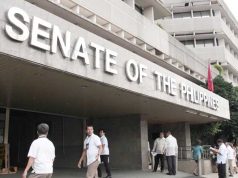FOREIGN CURRENCY loans granted by Philippine banks went up in 2017, latest central bank data showed, with bigger credit lines extended to logistics and export firms.
Banks lent out $15.374 billion under the foreign currency deposit units (FCDUs) as of end-December, up by 2.5% from the $14.992 billion worth of loans as of September 2017, the Bangko Sentral ng Pilipinas (BSP) reported on Wednesday.
The figure surged by 22.9% from the $12.51 billion worth of foreign currency borrowings in 2016.
FCDUs are bank units authorized by the central bank to conduct transactions involving foreign currencies, mainly by accepting deposits and handing out loans.
Total disbursements hit $15.8 billion as of end-December, up by a tenth from the previous quarter.
Firms engaged in the towing, tanker, trucking and forwarding business borrowed 23.5% more between October and December. Merchandise and service exporters also saw their loan lines increase by 21.4%, followed by public utility firms (11.1%); and producers/manufacturers, including oil companies (4.3%).
Bulk of FCDU loans came with medium to long-term maturities, with 75.9% due in more than one year. Only $3.712 billion are payable in less than a year, keeping the level manageable.
The increase in lending was partly offset by a 15% increase in settled debts.
Over two-thirds of the foreign currency loans were secured by Filipino companies at $10.396 billion, up 23.4% year-on-year. On the other hand, foreigners borrowed $4.978 billion, also 21.8% higher from end-2016.
By source, local commercial banks extended $13.388 billion while thrift banks granted $25-million loans. Foreign banks operating in the Philippines also provided $1.961-billion credit, according to central bank data.
Meanwhile, total foreign currency deposits reached $39.194 billion in 2017, up by a tenth from $35.869 billion the prior year.
Total loans-to-deposits ratio increased further to 39.2%, coming from the 38.4% share logged as of end-September and the 34.9% ratio in 2016.
A bigger stash of foreign currency deposits stood as additional buffers versus external shocks, and stands to support the BSP’s gross international reserves. — Melissa Luz T. Lopez



